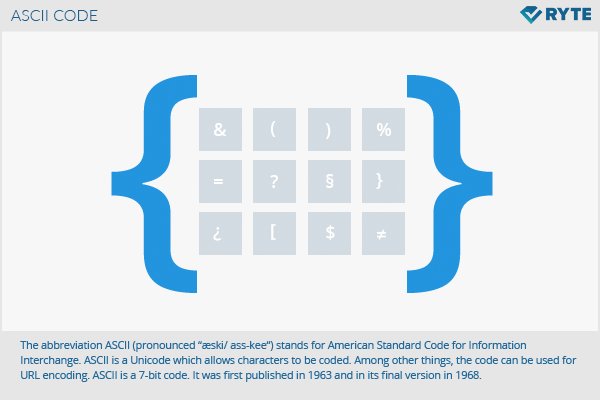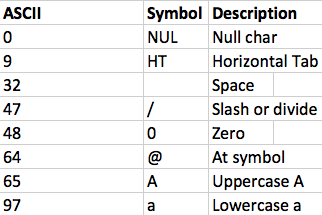ASCII Code
The abbreviation ASCII (pronounced “æski/ ass-kee“) stands for American Standard Code for Information Interchange. ASCII is a Unicode which allows characters to be coded. Among other things, the code can be used for URL encoding. ASCII is a 7-bit code. It was first published in 1963 and in its final version in 1968.
Structure
A single character, whether letter, digit or HTML special character is represented as a numeric sequence between 00 and 255. This can be represented using 8 bits. However, it is then no longer the classic ASCII sequence with seven bits.
Character sets
Different character sets can be encoded. The default character set, which is always the same, has the values 32 to 127. It contains the alphabet in upper and lower case, as well as Arabic numerals and a lot of punctuation. Values of 00-31 are non-printable control characters and the rest is usually intended for special characters such as î, é or €. Special characters such as the German ß or umlauts such as ü, ä, and ö are made possible by the eighth bit, which came about later. The assignment may be different.
Today the Unicode UTF-8 has replaced the original ASCII code, since it can represent all characters of human languages using 8 bits.
ASCII table
What characters are assigned to the code number is listed on a table and can be accessed for example, at ascii-code.com.
EXAMPLES
ASCII code and SEO
ASCII characters are in prevalent use today to make search snippets attractive. Tick marks, stars, or other characters are stored in the meta descriptions and displayed in the search results. Therefore, user attention can be specifically directed to search results, which may have a higher CTR result.
ASCII art
Using different character strings, computer artists create images which are also called ASCII art. Real photos can for example be rewritten into ASCII images through programs.[1]
References
- ↑ ASCII Art Generator codeproject.com Accessed on 03/20/2014


